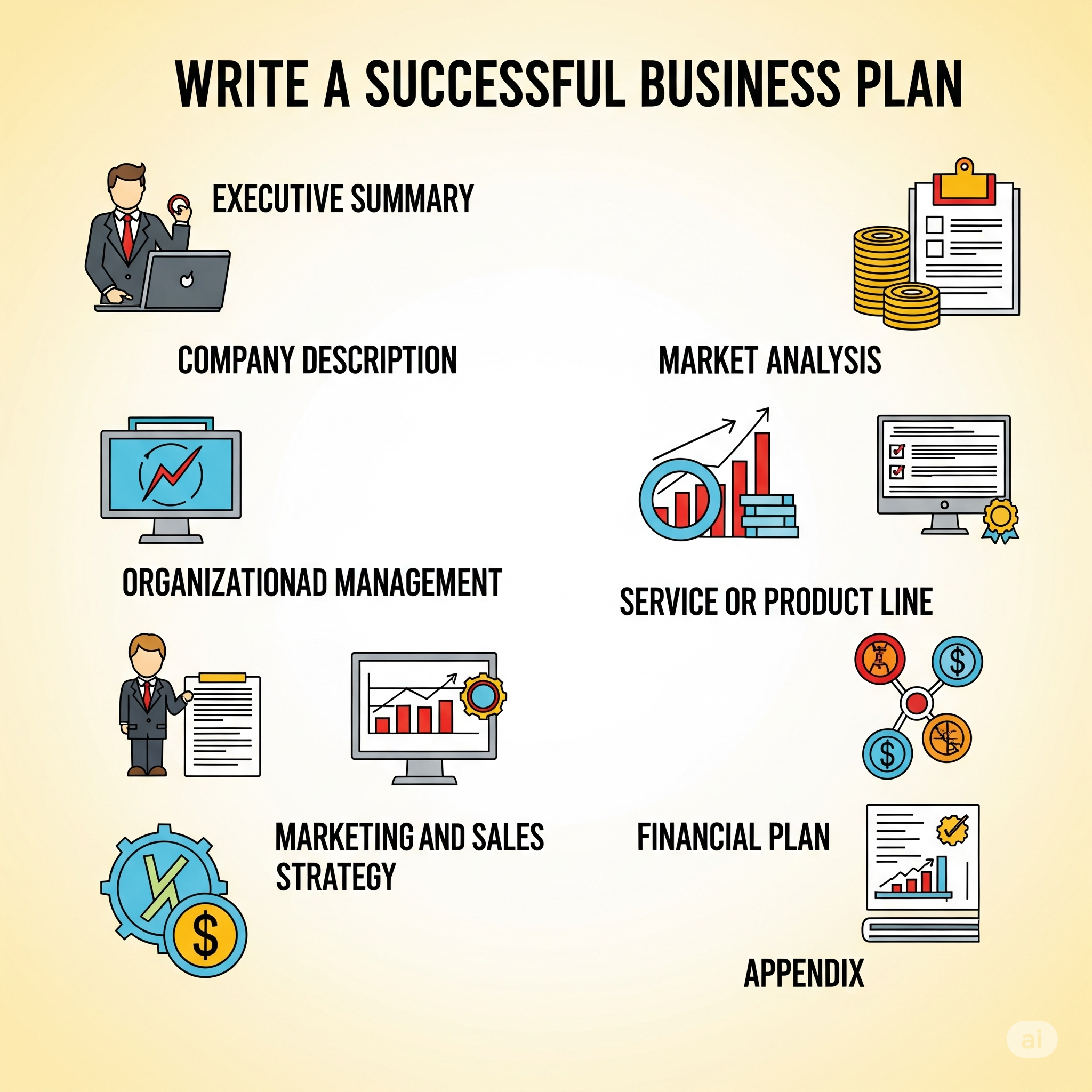Creating a strong business plan is the first and most important step in building a successful business. Whether you’re launching a startup, seeking funding, or expanding your business, a clear and detailed business plan helps guide your decisions and convinces investors you’re worth the risk.
Here’s a step-by-step guide to writing a business plan that gets results.
1. Executive Summary – The First Impression Matters
The executive summary is a brief overview of your entire business plan. Though it comes first, it’s often written last.
- Summarize your business idea
- Mention your mission statement
- Highlight your products/services
- Include basic financial and growth goals
- Keep it concise and compelling to grab attention
2. Company Description – Define Who You Are
This section explains what your business does and what sets it apart in the U.S. market.
- Legal structure (LLC, Corporation, Sole Proprietor)
- Business history and background
- Your vision and mission
- Location and reasons for choosing it
- Include what makes your business unique or competitive
3. Market Analysis – Know Your Industry and Competition
Before launching, you must understand your market. Investors want proof that you’ve done your research.
- Industry trends and forecasts
- Target customer demographics and behavior
- Competitor analysis – who they are, what they do, and how you’ll beat them
- Use data, graphs, and statistics to support your findings
4. Organization and Management – Show Your Team’s Strength
Investors want to know who’s running the business and why they’re qualified.
- Organizational structure (use a chart if needed)
- Key roles and responsibilities
- Backgrounds and experience of owners and managers
- Include any advisors or board members
5. Products or Services – Detail What You Offer
Clearly explain your product or service, and how it solves a problem or meets a need in the U.S. market.
- Product description and lifecycle
- Pricing strategy
- Intellectual property (patents, trademarks)
- Research and development plans
6. Marketing and Sales Strategy – How Will You Reach Customers?
This section outlines how you plan to attract and retain customers in a competitive U.S. market.
- Branding and positioning
- Advertising and promotions
- Sales channels (online, retail, B2B, etc.)
- Customer acquisition strategy
7. Funding Request – If You Need Capital, Ask Clearly
If you’re seeking funding from investors or lenders, you must be precise.
- How much funding you need
- How you will use the funds (equipment, inventory, staff, etc.)
- Future financial plans (additional rounds of funding, repayment strategies)
- Show that you are realistic and responsible
8. Financial Projections – Prove Your Profit Potential
Investors in the USA rely heavily on the numbers. Include accurate financial forecasts that demonstrate profitability.
- Profit and loss projections (3-5 years)
- Cash flow statement
- Balance sheet
- Break-even analysis
- Use charts and visuals to make it easy to understand
9. Appendix – Supporting Documents and Extra Information
This is where you include anything that supports your plan but would clutter the main sections.
- Resumes of key team members
- Legal documents
- Market research data
- Partnership agreements, permits, or leases

